Most Common Knitting Abbreviations & Definitions
Working through a knitting pattern can sometimes be like decoding hieroglyphics when you first start out. Did you know that there are standard knitting abbreviations that are to be used in patterns to make it easier? I say easier but it only becomes that when you know what the abbreviations mean. Bookmark this page to use on your next knitting pattern when you run across a term you don’t know!
Psst: if you like getting knitting help you should check out these other pages on the MarlyBird.com website: Short Row Help, Can I Take Knitting Needles on a Plane?, Cable Knitting Help.
*This post contains affiliate links. By clicking on one of these links and making a purchase a portion will go to the blog. The price you pay will not change and the small commission I receive helps me to keep bringing you free content and giveaways on the blog. Thank you for your continued support.*
Most Common Knitting Abbreviations
Although there is no standard for how a pattern needs to be formatted there are standards on what terminology to use in the pattern. Below is a list of the most common abbreviations you will find in your knitting patterns. Bookmark this page so that you can refer back to it when you have a question.
Most of these should be explained in the pattern if it is used. I will continue to update this page with videos as I make them to show you how to do most of these knitting moves.
During our last website rebuild we made an entire section of the site dedicated to not only knitting abbreviations but crochet abbreviations. We put it under the dropdown menu at the top “Learn to Knit & Crochet“.
When you click the dropdown menu, you will see a variety of options ranging from newbie crafter instructions, video tutorials, knitting definitions (which includes the knitting abbreviations, chart symbols and videos when available), crochet definitions (which includes the crocheting abbreviations, stitch diagram symbols and videos when available), common technique instructions, and sizing charts for knitting and crochet.


That dropdown menu is supposed to be your one stop location for everything you could need to be a better knitter or crocheter.
List of Common Knitting Abbreviations
Understanding the abbreviations for knitting can help you better understand a knitting pattern written in this shorthand form of instruction. These are the most common knitting abbreviations we have found and we have included the knitting definitions for each to go with it. If you want more information be sure to click the link for the full knitting definitions list which includes video links.
| Knitting Abbreviations | Terminology | Definition |
|---|---|---|
| https://marlybird.com/knitting-definitions/ | ||
| ( ) | parentheses | perform stitches inside of parentheses in stitch indicated |
| [ ] | brackets | repeat directions inside of brackets the number of times indicated |
| Approx | Approximately | |
| BO | Bind Off | Work (knit or purl, as indicated) 2 stitches, * pass first stitch over second stitch and off the right needle, work next stitch; repeat from * until 1 stitch remains, fasten off final stitch. |
| BRK | Brioche Knit | Knit next st together with the strand of yarn above it, formed by a yarn-over on the previous row. |
| BRP | Brioche Purl | Purl next st together with the strand of yarn above it, formed by a yarn-over on the previous row. |
| CDD | Center Double Decrease | Slip next 2 stitches knitwise at the same time, knit next stitch, pass slipped stitches over knit stitch (same as S2kp) – 2 stitches decreased. |
| CC | Contrasting Color | |
| Cn | Cable Needle | |
| CO | Cast on | |
| Cont | Continue | |
| Dec(s) | Decrease(s) | |
| Dpn(s) | Double Pointed Needle(s) | Used in circular knitting when the circumference of the piece is too small for circular needles. |
| Eor | Every Other Row | |
| Est | Established | |
| Gtr St | Garter Stitch | Knit every row. |
| Inc(s) | Increase(s) | |
| K | Knit | |
| Kfb | Knit Front & Back | Knit through front and back of next stitch – 1 stitch increased. |
| Kfbf | Knit Front, Back, and Front | Knit through front, back, and front of next stitch – 2 stitches increased. |
| Kwise | Knitwise; as if to knit | |
| K2tog | Knit Two Together | Knit 2 stitches together – 1 stitch decreased. |
| K3tog | Knit Three Together | Knit 3 stitches together – 2 stitches decreased. |
| LLM1 | Left-Lifted Make 1 | Insert tip of left needle from back to front into the left leg of the second stitch down from stitch on right needle (the grandmother stitch), knit it through the back leg – 1 stitch increased. |
| LT | Left Twist | Skip one stitch, knit next stitch through the back loop without dropping it off the needle, knit the skipped stitch, then drop both stitches from the right needle together. |
| MB | Make Bobble | Loosen next stitch, [knit into the front, then back] twice, then front again of loosened stitch, turn – 5 sts; Purl 5, turn; with left needle, pass second, third, fourth and fifth stitches 1 at a time over the first stitch and off the right needle—1 stitch remains, Bobble made. |
| MC | Main Color | |
| Meas | Measure(s) | |
| M1 | Make 1 | With tip of left needle, pick up the horizontal strand between stitches from front to back. Knit (or purl, as indicated) this strand through the back leg, twisting it into a loop in the process – 1 stitch increased. |
| M1k | Make 1 Knitwise | With tip of left needle, pick up the horizontal strand between stitches from front to back. Knit this strand through the back leg, twisting it into a loop in the process – 1 stitch increased. |
| M1kL | Make 1 Knitwise Left | With tip of left needle, pick up the horizontal strand between stitches from front to back. Knit this strand through the back leg, twisting it into a loop in the process – 1 stitch increased. |
| M1kR | Make 1 Knitwise Right | With tip of left needle, pick up the horizontal strand between stitches from back to front. Knit this strand, twisting it into a loop in the process – 1 stitch increased. |
| M1L | Make 1 Left | With tip of left needle, pick up the horizontal strand between stitches from front to back. Knit (or purl, as indicated) this strand through the back leg, twisting it into a loop in the process – 1 stitch increased. |
| M1p | Make 1 Purlwise | With tip of left needle, pick up the horizontal strand between stitches from front to back. Purl this strand through the back leg, twisting it into a loop in the process – 1 stitch increased. |
| M1pL | Make 1 Purlwise Left | With tip of left needle, pick up the horizontal strand between stitches from front to back. Purl this strand through the back leg, twisting it into a loop in the process – 1 stitch increased. |
| M1pR | Make 1 Purlwise Right | With tip of left needle, pick up the horizontal strand between stitches from back to front. Purl this strand, twisting it into a loop in the process – 1 stitch increased. |
| M1R | Make 1 Right | With tip of left needle, pick up the horizontal strand between stitches from back to front. Knit (or purl, as indicated) this strand, twisting it into a loop in the process – 1 stitch increased. |
| P | Purl | |
| Pat | Pattern | |
| Pfb | Purl Front & Back | Purl through front and back of next stitch – 1 stitch increased. |
| Pfbf | Purl Front, Back, and Front | Purl through front, back and front of next stitch – 2 stitches increased. |
| Pm | Place Marker | Place a stitch marker on the needle or in the fabric as indicated. |
| PU & K | Pick Up and Knit | Insert needle, from front to back, in indicated stitch or space in fabric; wrap yarn around needle as if to knit; use tip of needle to pull yarn through to the front of the fabric. |
| Pwise | Purlwise; as if to purl | |
| P2tog | Purl 2 together | Purl 2 stitches together – 1 stitch decreased. |
| P3tog | Purl 3 together | Purl 3 stitches together – 2 stitches decreased. |
| Psso | Pass Slipped Stitch Over | Pass a stitch that was previously slipped over other stitch(es) as indicated. |
| Rem | Remain(ing) | |
| Rep | Repeat | |
| RLM1 | Right-Lifted Make 1 | Insert tip of right needle into the right leg of the stitch directly under stitch on left needle (the mother stitch), lift the leg onto the left needle, and knit it – 1 stitch increased. |
| Rnd | Round | |
| RS | Right Side | This is the front of the fabric or outside of your project. |
| RT | Right Twist | Skip one stitch, knit next stitch without dropping it off the needle, knit the skipped st, then drop both stitches from the right needle together. |
| Skp | Slip, Knit, Pass | Slip next stitch knitwise, knit next stitch, pass slipped stitch over knit stitch. |
| Sk2p | Slip, Knit 2 Together, Pass | Slip next stitch knitwise, knit next 2 stitches together, pass slipped stitch over knit stitch. |
| Sl | Slip | Insert right needle in next stitch as if to purl (unless otherwise indicated), and slip it from the left needle onto the right needle. |
| Slm | Slip Marker | Slip stitch marker from left needle to right needle. |
| Ssk | Slip, Slip, Knit | Slip 2 stitches, one at a time, as if to knit. Insert left needle into the front of these 2 stitches and knit them together from this position – 1 stitch decreased. |
| Ssp | Slip, Slip, Purl | Slip 2 stitches, one at a time, as if to knit, then slip them back onto the left needle without changing their orientation. Purl these 2 stitches together through the back loop – 1 stitch decreased. |
| Sssk | Slip, Slip, Slip, Knit | Slip 3 stitches, one at a time, as if to knit. Insert left needle into the front of these 3 stitches and knit them together from this position – 2 stitches decreased. |
| Sssp | Slip, Slip, Slip, Purl | Slip 3 stitches, one at a time, as if to knit, then slip them back onto the left needle without changing their orientation. Purl these 3 stitches together through the back loop – 2 stitches decreased. |
| St(s) | Stitch(es) | |
| S2kp | Slip 2, Knit, Pass | Slip next 2 stitches knitwise at the same time, knit next stitch, pass slipped stitches over knit stitch (same as CDD). |
| St st | Stockinette Stitch | Knit on right-side rows, purl on wrong-side rows. |
| Tbl | Through Back Leg | Knit (or purl, as indicated) next stitch working through the back leg instead of the front leg of the stitch. |
| W&T | Wrap and turn | Used in creating short rows as follows: On a Knit row: With yarn in back, slip next stitch purlwise, bring yarn to front of work, return slipped stitch to left needle, bring yarn to back of work, then turn work. On a Purl row: With yarn in front, slip next stitch purlwise, bring yarn to back of work, return slipped stitch to left needle, bring yarn to front of work, then turn work. When arriving at wrapped stitch later in the pattern, knit it (or purl it, as indicated) together with its wrap. |
| WS | Wrong Side | This is the back of the fabric or inside of your project. |
| Wyib | With Yarn in Back | Work next stitch or instruction (usually a slip stitch) with yarn held in back of the work. |
| Wyif | With Yarn in Front | Work next stitch or instruction (usually a slip stitch) with yarn held in front of the work. |
| Yb | Yarn to Back | Bring yarn to the back between the two needles. |
| Yf | Yarn to Front | Bring yarn to the front between the two needles. |
| Yo | Yarn Over | Wrap yarn from front to back over the right needle – 1 stitch increased (if the yo is used as a stand-alone stitch). |
| 1/1 LC | 1/1 Left Cable | Slip 1 stitch onto cable needle and hold in front, knit 1 stitch from left needle, then knit 1 stitch from cable needle. |
| 1/1 LPC | 1/1 Left Cable with Purl | Slip 1 stitch onto cable needle and hold in front, purl 1 stitch from left needle, then knit 1 stitch from cable needle. |
| 1/1 RC | 1/1 Right Cable | Slip 1 stitch onto cable needle and hold in back, knit 1 stitch from left needle, then knit 1 stitch from cable needle. |
| 1/1 RPC | 1/1 Right Cable with Purl | Slip 1 stitch onto cable needle and hold in back, knit 1 stitch from left needle, then purl 1 stitch from cable needle. |
| 1/1/1 LC | 1/1/1 Left Cable | Requires the use of two cable needles simultaneously. Slip 1 stitch onto cable needle and hold in front, slip 1 stitch onto a second cable needle and hold in back, knit 1 stitch from left needle, knit 1 stitch from back cable needle, then knit 1 stitch from front cable needle. |
| 1/1/1 LPC | 1/1/1 Left Cable with Purl | Requires the use of two cable needles simultaneously. Slip 1 stitch onto cable needle and hold in front, slip 1 stitch onto a second cable needle and hold in back, purl 1 stitch from left needle, knit 1 stitch from back cable needle, then knit 1 stitch from front cable needle. |
| 1/1/1 RC | 1/1/1 Right Cable | Requires the use of two cable needles simultaneously. Slip 1 stitch onto cable needle and hold in back, slip 1 stitch onto a second cable needle and hold in back of first cable needle, knit 1 stitch from left needle, knit 1 stitch from backmost cable needle, then knit 1 stitch from remaining cable needle. |
| 1/1/1 RPC | 1/1/1 Right Cable with Purl | Requires the use of two cable needles simultaneously. Slip 1 stitch onto cable needle and hold in back, slip 1 stitch onto a second cable needle and hold in back of first cable needle, knit 1 stitch from left needle, purl 1 stitch from backmost cable needle, then knit 1 stitch from remaining cable needle. |
| 1/2 LC | 1/2 Left Cable | Slip 1 stitch onto cable needle and hold in front, knit 2 stitches from left needle, then knit 1 stitch from cable needle. |
| 1/2 LPC | 1/2 Left Cable with Purl | Slip 1 stitch onto cable needle and hold in front, purl 2 stitches from left needle, then knit 1 stitch from cable needle. |
| 1/2 RC | 1/2 Right Cable | Slip 2 stitches onto cable needle and hold in back, knit 1 stitch from left needle, then knit 2 stitches from cable needle. |
| 1/2 RPC | 1/2 Right Cable with Purl | Slip 2 stitches onto cable needle and hold in back, knit 1 stitch from left needle, then purl 2 stitches from cable needle. |
| 2/1 LC | 2/1 Left Cable | Slip 2 stitches onto cable needle and hold in front, knit 1 stitch from left needle, then knit 2 stitches from cable needle. |
| 2/1 LPC | 2/1 Left Cable with Purl | Slip 2 stitches onto cable needle and hold in front, purl 1 stitch from left needle, then knit 2 stitches from cable needle. |
| 2/1 RC | 2/1 Right Cable | Slip 1 stitch onto cable needle and hold in back, knit 2 stitches from left needle, then knit 1 stitch from cable needle. |
| 2/1 RPC | 2/1 Right Cable with Purl | Slip 1 stitch onto cable needle and hold in back, knit 2 stitches from left needle, then purl 1 stitch from cable needle. |
| 2/1/2 LC | 2/1/2 Left Cable | Requires the use of two cable needles simultaneously. Slip 2 stitches onto cable needle and hold in back, slip 1 stitch onto a second cable needle and hold in back of first cable needle, knit 2 stitches from left needle, knit 1 stitch from backmost cable needle, then knit 2 stitches from remaining cable needle. |
| 2/1/2 LPC | 2/1/2 Left Cable with Purl | Requires the use of two cable needles simultaneously. Slip 2 stitches onto cable needle and hold in back, slip 1 stitch onto a second cable needle and hold in back of first cable needle, knit 2 stitches from left needle, purl 1 stitch from backmost cable needle, then knit 2 stitches from remaining cable needle. |
| 2/1/2 RC | 2/1/2 Right Cable | Requires the use of two cable needles simultaneously. Slip 2 stitches onto cable needle and hold in front, slip 1 stitch onto a second cable needle and hold in back, knit 2 stitches from left needle, knit 1 stitch from back cable needle, then knit 2 stitches from front cable needle. |
| 2/1/2 RPC | 2/1/2 Right Cable with Purl | Requires the use of two cable needles simultaneously. Slip 2 stitches onto cable needle and hold in front, slip 1 stitch onto a second cable needle and hold in back, knit 2 stitches from left needle, purl 1 stitch from back cable needle, then knit 2 stitches from front cable needle. |
| 2/2 LC | 2/2 Left Cable | Slip 2 stitches onto cable needle and hold in front, knit 2 stitches from left needle, then knit 2 stitches from cable needle. |
| 2/2 LPC | 2/2 Left Cable with Purl | Slip 2 stitches onto cable needle and hold in front, purl 2 stitches from left needle, then knit 2 stitches from cable needle. |
| 2/2 RC | 2/2 Right Cable | Slip 2 stitches onto cable needle and hold in back, knit 2 stitches from left needle, then knit 2 stitches from cable needle. |
| 2/2 RPC | 2/2 Right Cable with Purl | Slip 2 stitches onto cable needle and hold in back, knit 2 stitches from left needle, then purl 2 stitches from cable needle. |
| 3/3 LC | 3/3 Left Cable | Slip 3 stitches onto cable needle and hold in front, knit 3 stitches from left needle, then knit 3 stitches from cable needle. |
| 3/3 LPC | 3/3 Left Cable with Purl | Slip 3 stitches onto cable needle and hold in front, purl 3 stitches from left needle, then knit 3 stitches from cable needle. |
| 3/3 RC | 3/3 Right Cable | Slip 3 stitches onto cable needle and hold in back, knit 3 stitches from left needle, then knit 3 stitches from cable needle. |
| 3/3 LPC | 3/3 Right Cable with Purl | Slip 3 stitches onto cable needle and hold in back, knit 3 stitches from left needle, then purl 3 stitches from cable needle. |
| marlybird.com | Be sure to save this blog post for future use! |
Where to Learn More Knitting Techniques and Knitting Skills
If you are looking for more instructions to become even more familiar with knitting (or crochet) we recommend checking out the Camp Colorwork course inside the Marly Bird House.


Now that you have all the knitting abbreviations you could possibly need, you are ready to tackle that next knitting pattern. Here are a list of some of our patterns here on the MarlyBird.com website.
Happy Knitting!
xo
Marly Bird




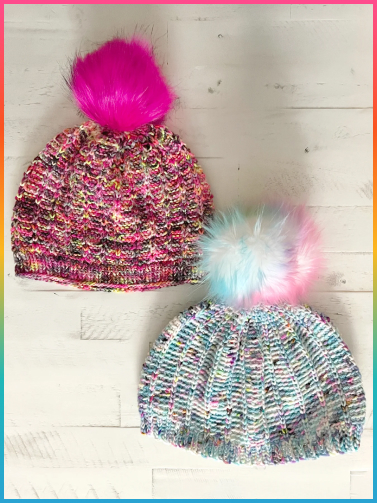

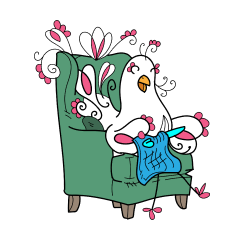

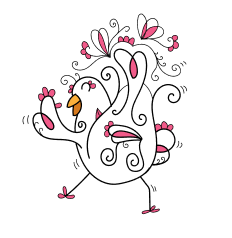
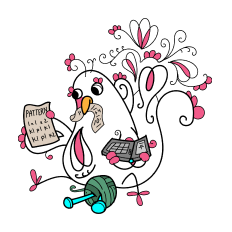
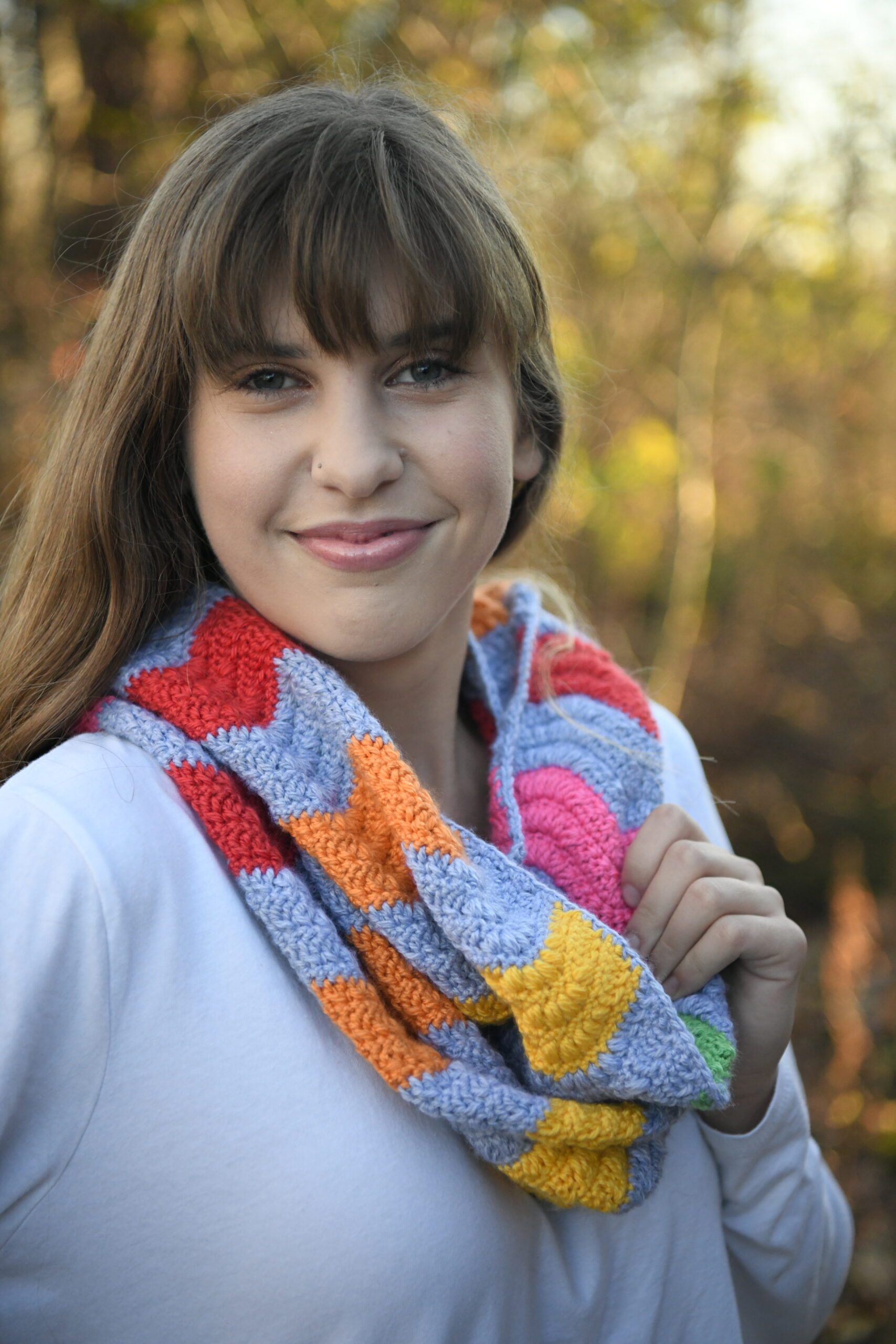
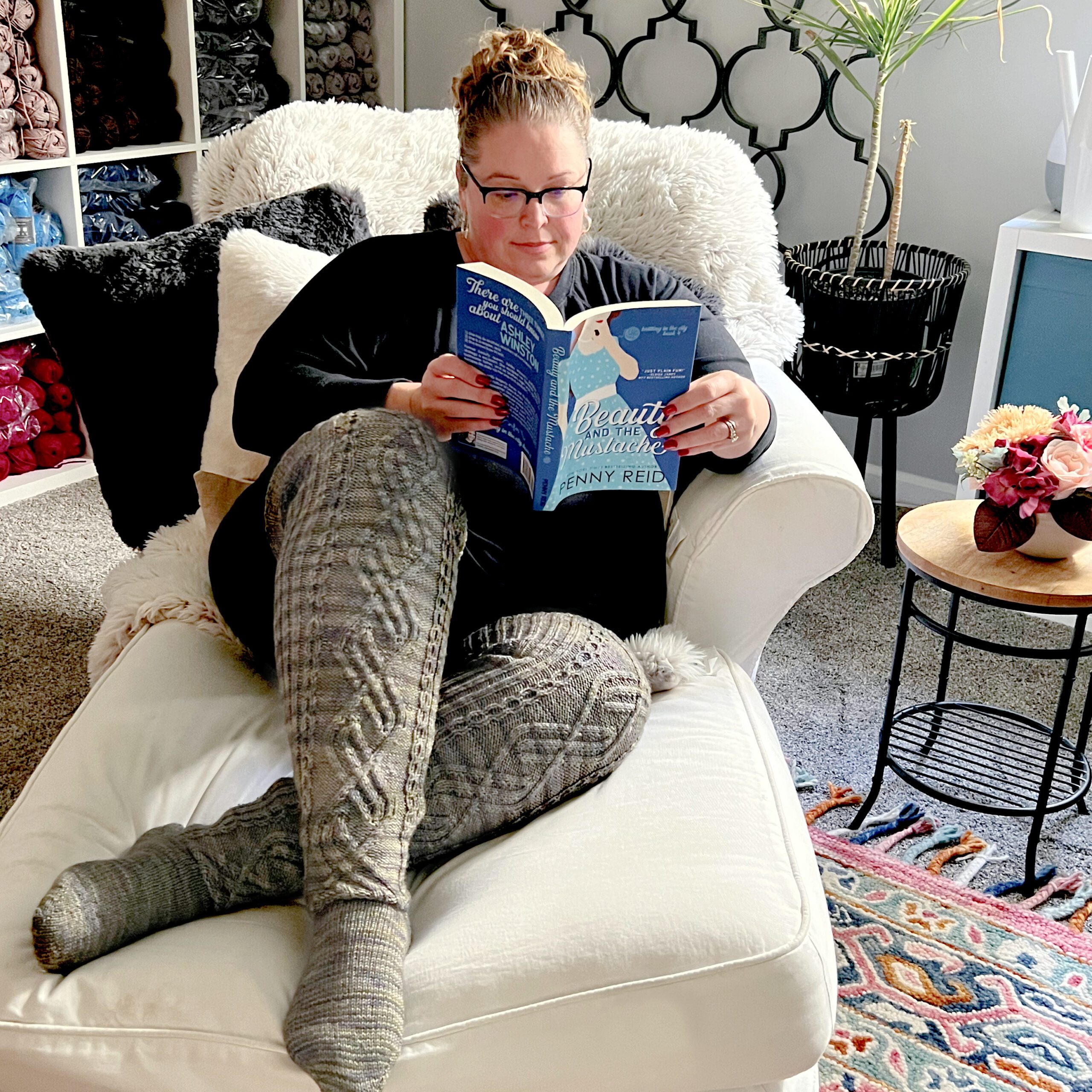
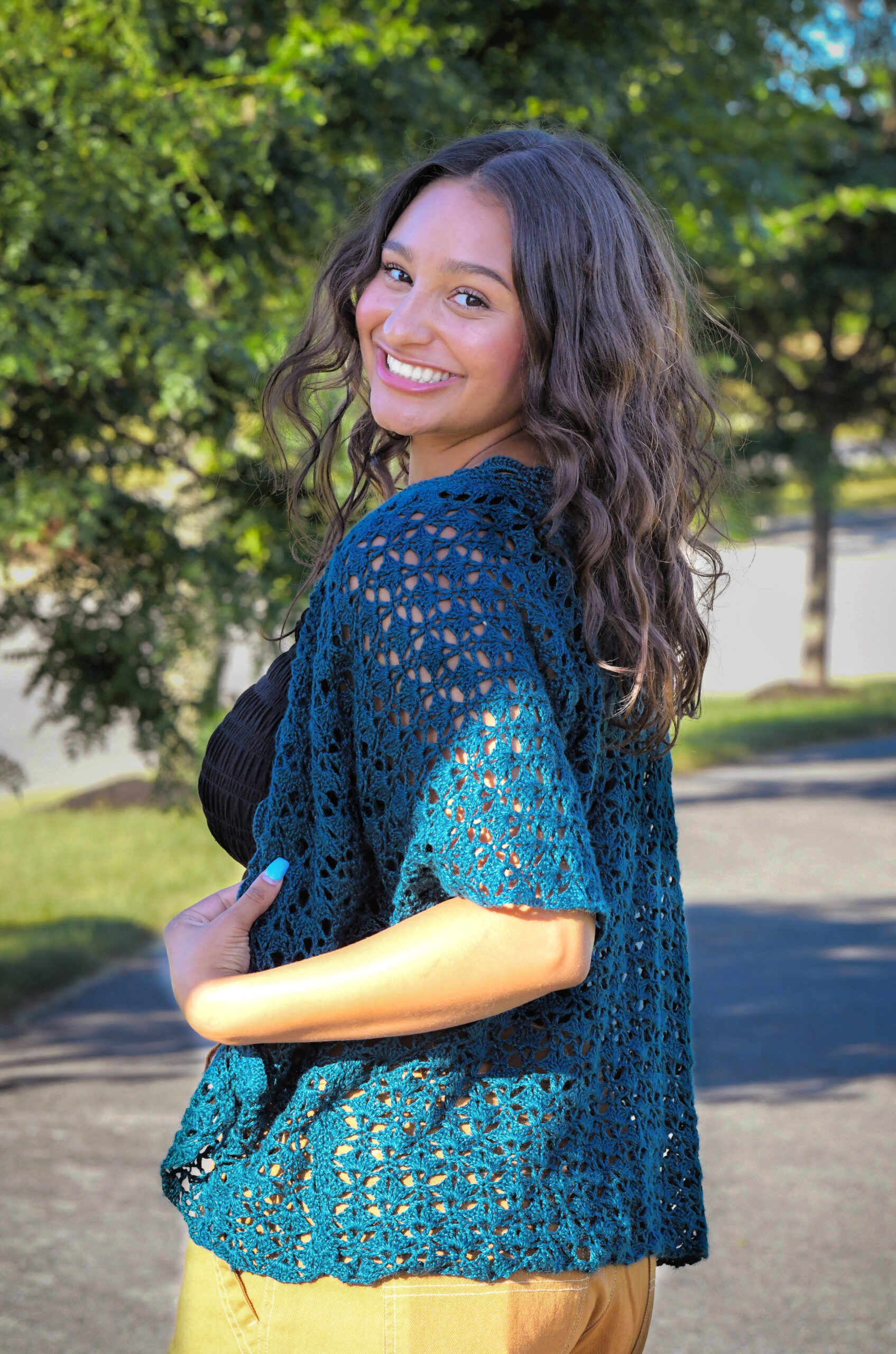
This is a Godsend thank you so much for all your hard work! xoxo
Thank you! Reading the list I remember learning a lot of these through your KALS and other YouTube videos.